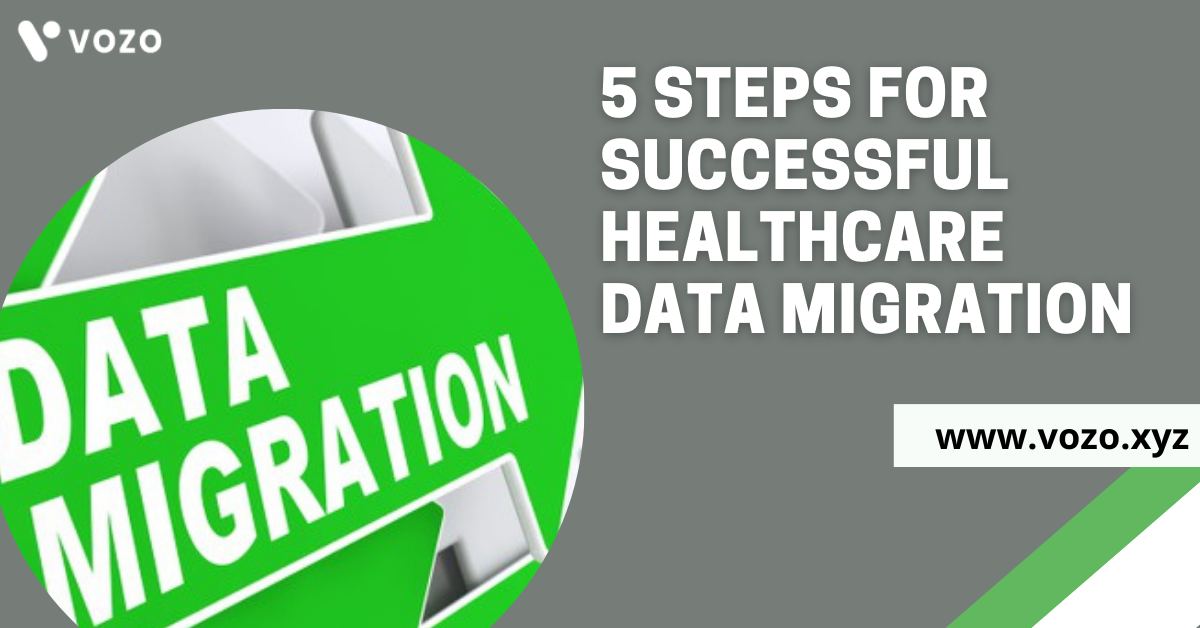5 Steps For Successful Healthcare Data Migration
Today’s healthcare providers are started embracing the digital transformation in healthcare. The healthcare practices and clinics are connected with each piece of information through health information exchanges. For this, they may have some advanced software integrated with the practice EHR software. Some of the healthcare practices are finding their current EHR systems to be outdated and incompatible with their practice management and medical billing software.
So, switching towards advanced EHR software is the top priority for healthcare providers to achieve better data migration. To get the complete advantage from the advanced technologies is to create and make use of healthcare data migration strategies which creates a smooth health information system. Here are the 5 effective steps that guide you towards successful data migration.
What Are The Steps In Data Migration?
1. Your First Step Is To Develop A Long-Term Migration Strategy
Healthcare Data migration must not be treated as a quick fix. While it will certainly solve some immediate problems, healthcare companies need to make projections for at least five years when making decisions. For example, it is essential to plan for future capacity and forecast tech trends when evaluating requirements. Without focusing on long-term needs, healthcare providers may undertake another costly data migration in the next few years.
2. Specify The Data For Migration In The Right Manner
Not every migration requires a complete relocation of all data available. Some legacy systems and data may be left in their place or moved to a different location from the other data assets in a few cases.
For this reason, taking a complete inventory of all existing data assets and deciding whether or not to move them is a necessity. When data must be transferred, the desired destination must be identified. This will prevent delays or confusion when the migration gets to a critical stage and changes become more costly and challenging to implement.
3. Maintain Data Integrity Effectively
Data integrity ensures that data remains accurate, consistent, and reliable while moving from one system to another. Adequate error checking and validation procedures must be in place to ensure that data is not altered or duplicated during transfer.
Most of the work required to preserve data integrity must be done during the pre-planning stage. Never assume that there will be a one-to-one relationship between fields and data types. Errors could occur that will make patient records inaccessible or incomplete. So ensure that there’s a manual check to monitor the effectiveness of the electronic migration process.
READ MORE: How To Do EHR Implementation In The Right Way?
4. Use A Hybrid Storage Solution For Better Results
Consider using a cloud-based storage solution to augment your on-premises storage. Many cloud service providers now offer better security, access restrictions, and reliability than most in-house IT teams can provide. Cloud infrastructure enables healthcare companies to quickly acquire more storage and computing resources as needed.
While regulatory compliance requires providers to maintain in-house servers to store sensitive data, most patient health records can be kept and managed in the cloud. Using a hybrid solution that combines physical and cloud infrastructure may be the best option for large healthcare providers.
5. Create Well-Defined Timelines To Achieve Data Migration
Set a detailed timetable for your healthcare data migration project. This is necessary because daily operations in a hospital now depend totally on the availability of patient data. Therefore, data should be moved during off-peak hours or on weekends when there’s a reduced demand for the information system. A parallel environment may need to be created to enhance the transfer in a facility with consistently high demand. At the end of the data migration, the existing system will be shut down.
Final Thoughts
The ongoing transformation in the digital landscape is paving the way for new advanced EHR implementation. Therefore, when making the switch, the practices should keep these 5 steps to achieve successful healthcare data migration. Vozo helps you to switch to the advanced EHR software and makes sure your data is 100% secure when migrated onto a new system.
About the author

With more than 4 years of experience in the dynamic healthcare technology landscape, Sid specializes in crafting compelling content on topics including EHR/EMR, patient portals, healthcare automation, remote patient monitoring, and health information exchange. His expertise lies in translating cutting-edge innovations and intricate topics into engaging narratives that resonate with diverse audiences.













